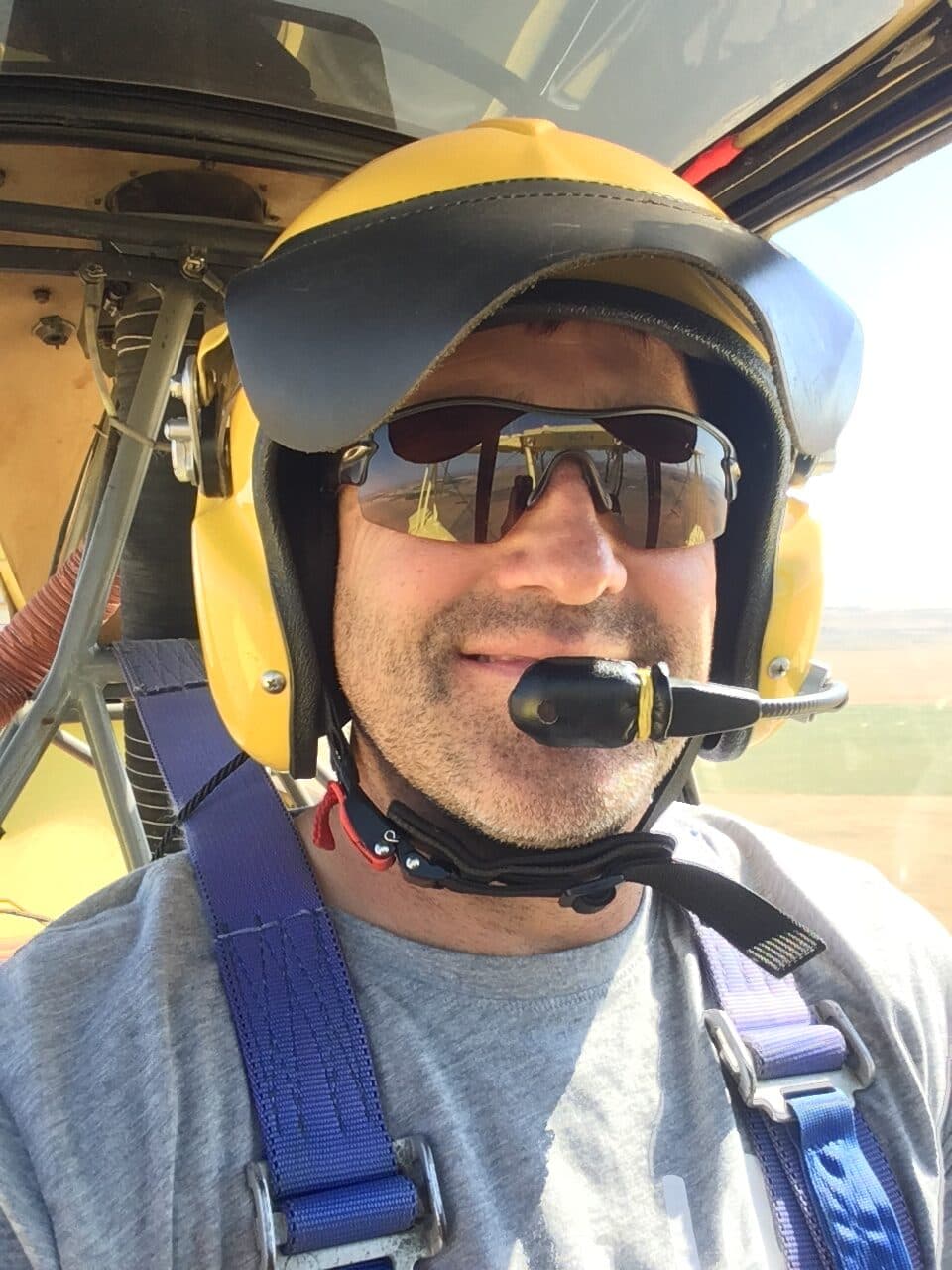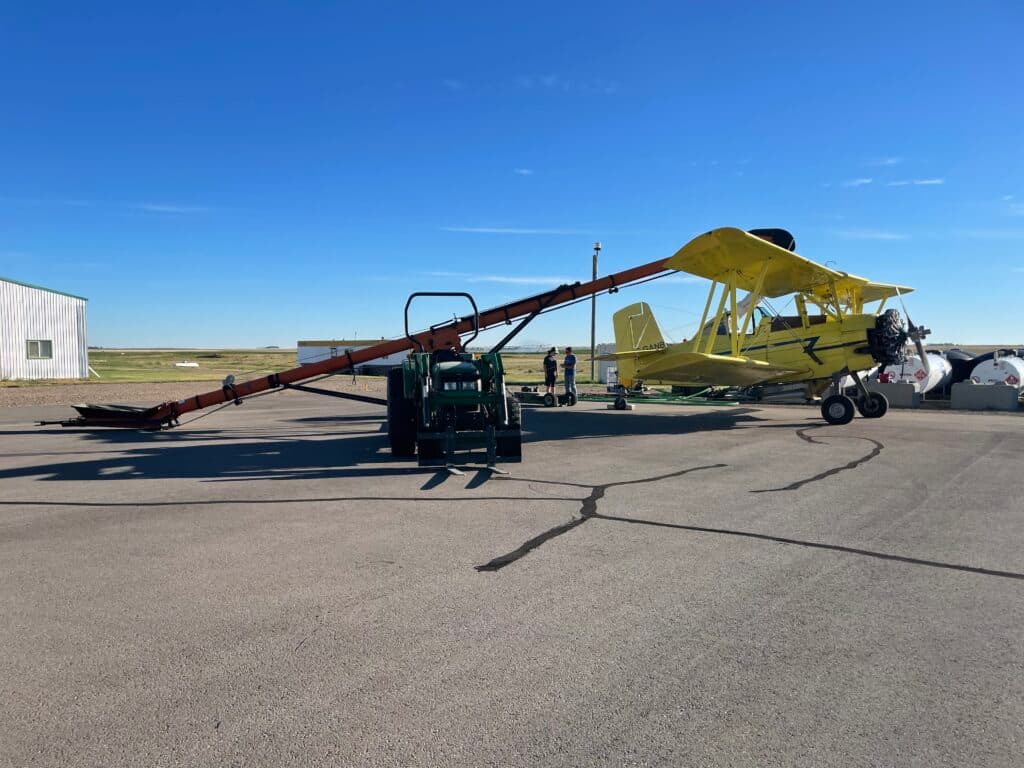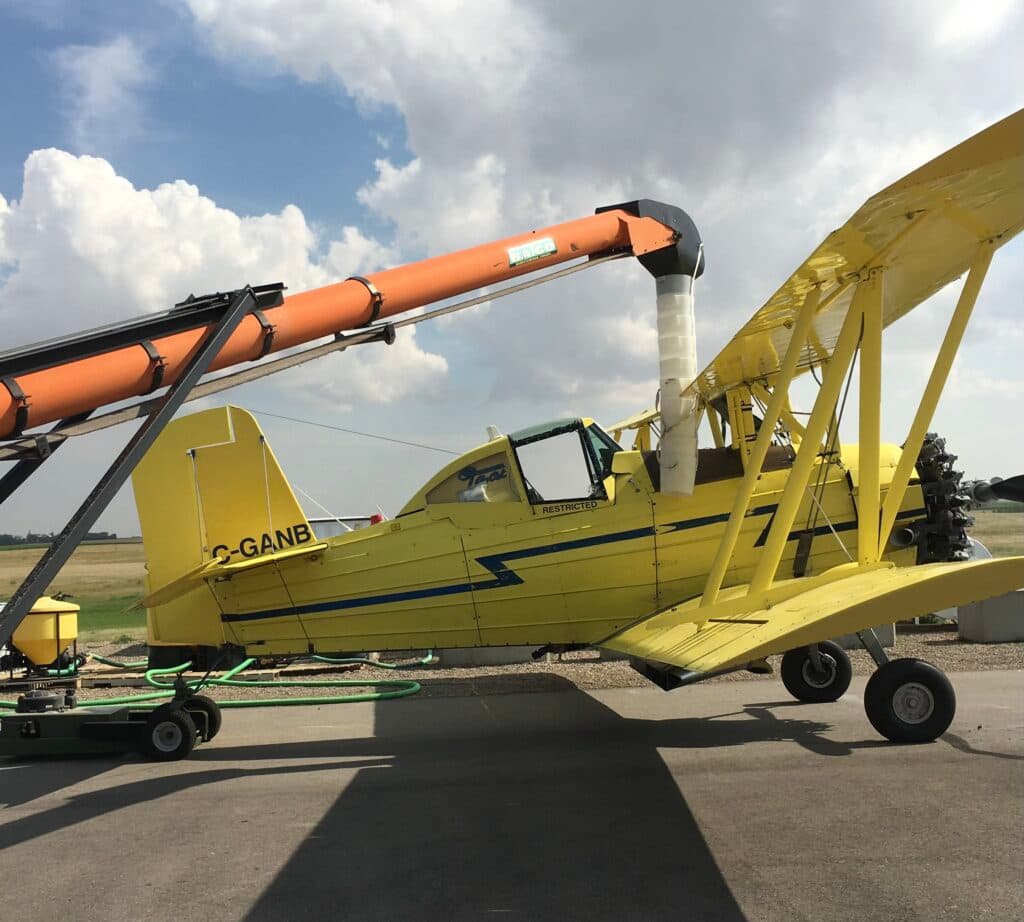

This month we spoke with Will Van Roessel and Nathan Hoffman. Will Van Roessel is a seed producer located in the Bow Island area of southern Alberta. He and his wife Jean own Specialty Seeds Limited and farm irrigated land producing crops and pedigree seeds such a fall rye, winter wheat and peas. Will Van Roessel applied and was successful in his approval for OFCAF Beneficial Management Practice (BMP) funding for: adoption of cover cropping.
Nathan Hoffman of Top Crop Applicators is a professional aerial applicator from Bow Island. He works with farmers in the Medicine Hat / Taber area to spread seed on their fields via plane. He has adapted his plane to help producers with aerial application of cover crop seed. Producers from this region grow beans and potatoes that are exported all over the world.
We talked to Will and Nathan to ask them about their OFCAF Experience and gain some on-the-ground perspective of farming in the Bow Island region.

How do you think OFCAF Funding and BMP adoption will benefit farmers in your region?
Roessel: OFCAF funding can certainly help farmers try new methods and take risks to make their fields for resilient. This funding gives people the incentive to try something new and reduces the financial risk. Cover crops help the land hold moisture and nutrients to better weather the dry times.
Hoffman: Farmers are always looking for the next big thing to help with soil health. OFCAF is exciting in our area especially because farmers down here want to try new things (cover cropping) and be able to receive funding to cover costs.
What BMP activity were you approved for?
Roessel: Cover cropping. OFCAF funding paid for aerial application of seed with Nick Hoffman from Top Crop Applicators. This is something I’ve never done before and with OFCAf funding, it de-risks the cost of this activity.
Hoffman: I did not apply for OFCAF funding, but I work closely with producers to help them apply seed to their land. I think OFCAF funding is a great tool to battle soil erosion. OFCAF gives farmers a chance to improve overall health and fertility of their soils.
What is the farming like the Bow Island area?
Roessel: We farm about 2000 acres and the majority of it is irrigated.
Hoffman: We live in Bow island. It is an area in between Medicine Hat and Taber. Much of the land is irrigated because it is dry. On land down here, specialty crops are very intensive and can leave the soil disturbed once harvest is done. Soil health is a big thing. Especially for 4th and 5th generation farms. They can have high fertilizer bills for production of crops, so this all connects together to protect soil health.
How was your OFCAF application experience?
Roessel: Very satisfactory. The application form was not difficult. I had some challenges with my map submission, so the OFCAf team ended up helping me submit the maps.
Tell us about aerial cover crop seed application
Hoffman: The best window for our role in cover crop seeding would be generally mid-August to mid-September. There is a very high interest in cover crop seeding into dry beans before they are harvested. The airplane spreads the seed over the standing crop. When the beans are harvested, the machine incorporates the cover crop seed into the ground at the same time with a machine called a “one step”. The one step windrows the beans and the cover crop seed is lying in warm soil. After the beans are off the field, irrigation can commence and the cover crop is away to the races! Thousands of acres of dry beans are grown around southern Alberta. This crop leaves the soil very disturbed and at risk to erosion. So cover crop seeding can be a useful activity for farmers to try.

What types of cover crops do you spread via plane in your area? what are the benefits to producers?
Hoffman: Here is a video of a plane spreading fall rye seed into standing corn. Producers would hope for soil benefits including grazing in the late fall or early spring.